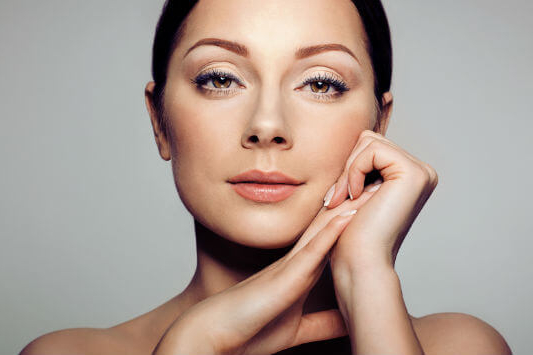
Facials can be described as either traditional or medical. Traditional facials emphasize relaxation and pampering while medical facials are used to treat skin problems.
A traditional facial is performed at a spa by an aesthetician while a medical facial is performed by a dermatologist. A medical facial involves stronger medications than a spa facial does.
What Does a Traditional Facial Involve?
Traditional facials or spa facials are done to promote relaxation and to clean and rejuvenate the skin. They include deep pore cleansing facials that are done to treat problems like dehydration, fine wrinkles, and breakouts.
During a deep pore cleansing facial, the aesthetician will begin by cleaning the skin with a facial scrub or gentle cleanser. The aesthetician will then exfoliate the skin to remove dead skin cells and unclog pores.
Steam will also open up the client’s pores. Once the pores are open, the aesthetician will begin extracting any blackheads and whiteheads. Since this process can irritate the skin, the aesthetician will calm the skin with a massage and facial mask.
At the end of the facial, the aesthetician will apply moisturizer or sunblock.
Other types of spa facials include oxygen facials and anti-aging facials. During an oxygen facial, the aesthetician uses a wand resembling an airbrush that emits 90 to 95% pure oxygen.
Anti-aging facials are spa facials tailored for women over 40.
What Does a Medical Facial Involve?
Medical facials are designed to rejuvenate the skin and thus often involve extensive exfoliation. They are also done to treat more serious skin problems than traditional facials. A medical facial can be used to treat sun damage, discoloration and signs of aging.
A medical facial often involves the same techniques used in a spa facial like exfoliation or extractions, but the dermatologist may also use procedures like chemical peels, dermabrasion, and treatments involving light or lasers.
Photorejuvenation or IPL and microcurrent therapy are among the more common procedures used during a medical facial.
In microcurrent therapy, the dermatologist uses a hand-held device that emits weak electrical currents. The device is placed on the patient’s skin, and it sends the currents deep into the skin where they stimulate the facial muscles and improve their tone.
Photorejuvenation is a procedure done to stimulate collagen production. The doctor uses a device that emits pulses of intense light that penetrate the patient’s skin.
The light then heats the cells or fibroblasts in the dermis or deeper layer of the skin which causes them to produce more collagen. The new collagen improves the skin’s texture and smooths out wrinkles.
Contact MD Beauty Labs today to schedule an appointment.






